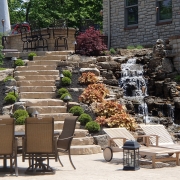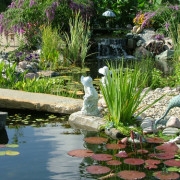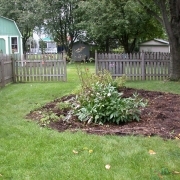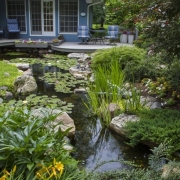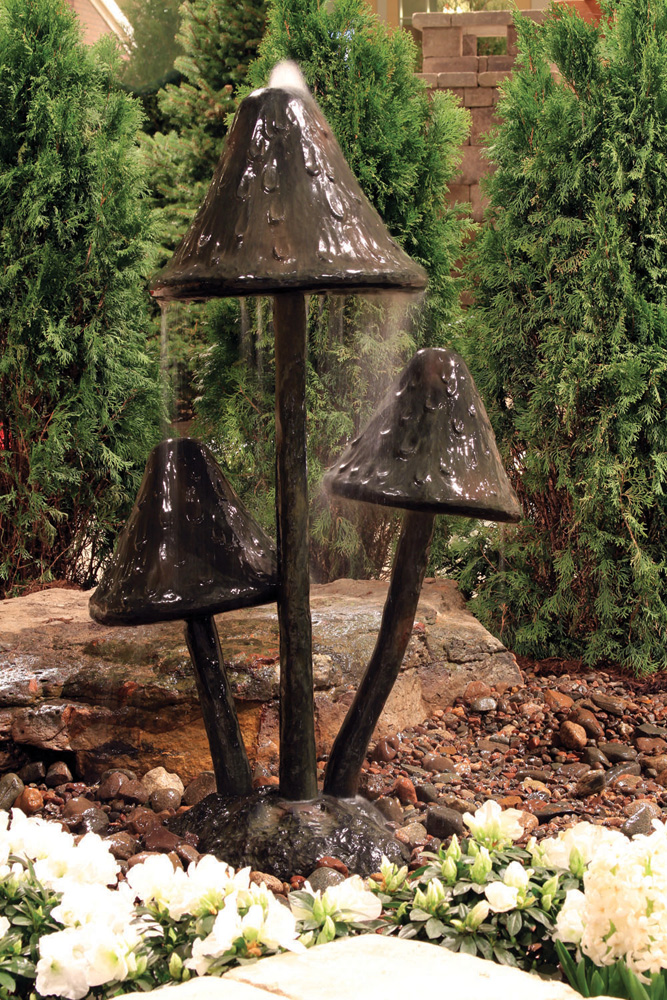Waterfalls: A Guide to Waterfalls
All About Waterfalls: A Comprehensive Guide to Waterfalls
Waterfalls are one of the most popular natural attractions. They are created when water from a stream or river flows over a cliff or steep edge. Waterfalls can vary greatly in size, with some being just a few feet tall and others reaching hundreds of feet in height. Regardless of their size, waterfalls are always impressive to behold.
Types of Waterfalls
There are many different types of waterfalls, each with its own unique features. Some of the most popular waterfall types include cascade waterfalls, tiered waterfalls, block waterfalls, and plunge waterfalls.
Cascade waterfalls are the most common type of waterfall. They are characterized by a series of small steps or ledges over which the water flows. Tiered waterfalls also have a series of steps, but the water flows over them in a more uniform manner. Block waterfalls are created when water flows over a large block of stone or other material. Plunge waterfalls occur when water drops straight down from a cliff or waterfall lip.
Location
Waterfalls can be found all over the world, on every continent except for Antarctica. Some of the most iconic and popular waterfalls are located in North America, including Niagara Falls and Yosemite Falls. Other well-known waterfall destinations include Iguazu Falls in South America, Victoria Falls in Africa, and Angel Falls in Venezuela.
How Waterfalls Form
Waterfalls are formed by a variety of geological processes. The most common process is erosion, which occurs when water flows over a piece of land and wears it away over time. This can create a waterfall lip, as well as the ledges or steps often seen in cascade waterfalls. Earthquakes can also cause waterfalls to form by breaking apart rocks and creating new channels for water to flow through.
The Beauty of Waterfalls
Whether you’re looking at a small waterfall cascading over a ledge or a towering plunge waterfall, it’s easy to see the beauty of these natural wonders. Waterfalls are often considered to be soothing and calming, making them popular places to relax and enjoy the scenery. Many people also enjoy hiking and exploring the area around waterfalls.
If you’re interested in seeing waterfalls up close, there are many ways to do so. You can find waterfall hikes and tours in many different parts of the world. You can also visit waterfall parks, such as Niagara Falls State Park in New York or Yosemite National Park in California.
No matter where you go, waterfalls are sure to impress. These natural wonders are truly a sight to behold. Now, these waterfalls can be placed in your backyard. Manmade waterfalls have become one of the most beautiful ways to spice up your backyard.
Backyard Water Garden with Waterfalls
A waterfall is a manmade feature that can enhance the beauty and serenity of your backyard. Waterfalls come in all shapes, sizes, and styles. You can find waterfall kits that are easy to install and require little maintenance. These waterfall kits often include everything you need to create a stunning waterfall in your own backyard.
When planning your backyard waterfall, there are a few things to keep in mind. First, you’ll need to determine the size and scale of your waterfall. You’ll also need to choose the right location for your waterfall. It’s important to make sure that your waterfall won’t overwhelm your yard or garden space.
Once you have a plan in place, you can begin shopping for waterfall kits. Waterfall kits come in a variety of materials, including stone, resin, and fiberglass. You can also find waterfall kits that come with everything you need to get started, including pump, liner, and rocks.
Installing your waterfall is relatively simple and can be done in a weekend. First, you’ll need to excavate the area where your waterfall will be located. Next, you’ll place your liner in the excavated area and fill it with water. Then, you’ll add your waterfall rocks and pump. Finally, you’ll plug in your waterfall and enjoy the sound of cascading water in your own backyard.
Adding a waterfall to your backyard is a great way to create a peaceful and relaxing oasis. Waterfalls are also relatively easy to install and maintain, making them a great option for both novice and experienced gardeners. With a little planning and effort, you can have a waterfall in your backyard that will be the envy of your neighbors.
Professional Installation of Waterfalls to your Water Garden or Do It Yourself?
If you’re looking to add a waterfall to your backyard, you may be wondering if you should hire a professional or do it yourself. There are pros and cons to both options.
Hiring a professional has several benefits. First, professionals have the experience and expertise to properly install your waterfall. They also have the right tools and equipment to get the job done quickly and efficiently. Additionally, professionals can help you choose the right location for your waterfall and ensure that it blends in seamlessly with your existing landscape.
DIY waterfall kits are also available and can be a great option for homeowners who are handy and have some basic carpentry skills. waterfall Kits come with everything you need to create a waterfall, including the pump, liner, and rocks. waterfall kits typically range in price from $300 to $5000, depending on the size and style of waterfall you choose.
Installing a waterfall yourself can be a fun and rewarding project. However, it’s important to keep in mind that installing a waterfall is not a simple task. There is a lot of heavy lifting involved, and you’ll need to take care to properly install your waterfall so that it doesn’t leak. If you’re not confident in your ability to install a waterfall, it’s always best to hire a professional.
No matter which option you choose, adding a waterfall to your backyard is a great way to create a peaceful and relaxing oasis!
Streams, Waterfalls, Ponds – What else?
If you’re looking to add a waterfall to your backyard, you may be wondering what other options are available. In addition to waterfall kits, you can also find stream and pond kits. Stream and pond kits typically include everything you need to get started, including the pump, liner, and rocks.
Streams and ponds can be a great addition to your waterfall landscape. Streams can help direct water flow and create a more natural look. Ponds can also be used to catch and store water for your waterfall.
Installing a stream or pond is a relatively simple process. First, you’ll need to excavate the area where your stream or pond will be located. Next, you’ll place your liner in the excavated area and fill it with water. Then, you’ll add your rocks and pump. Finally, you’ll plug in your waterfall and enjoy the sound of cascading water in your own backyard.
Adding a stream or pond to your waterfall landscape can help create a more natural look. Streams and ponds can also provide additional storage for water and help direct water flow.
Adding Lights Behind Your Waterfall
Adding lights to your waterfall is a great way to create a dramatic and relaxing effect. waterfall lights are available in a variety of colors and styles, so you can choose the perfect look for your backyard.
Installing waterfall lights is a relatively simple process. First, you’ll need to excavate the area behind your waterfall where your lights will be located. Next, you’ll place your lights in the excavated area and connect them to an electrical outlet. Finally, you’ll plug in your waterfall and enjoy the soothing sound of cascading water while being surrounded by beautiful lighting.
Adding lights to your waterfall is a great way to create a relaxing and tranquil atmosphere in your backyard. Waterfall lights are also relatively easy to install and can be found at most home improvement stores, or can be purchased here on our website. We recommend the Aquascape line of products for reliability and durability reasons.
Waterfall Maintenance
Once your waterfall is installed, it’s important to perform routine maintenance to ensure that it continues to operate properly. waterfall maintenance typically includes cleaning the pump, checking the liner for leaks, and removing debris from the waterfall.
Cleaning the pump is an important part of waterfall maintenance. The pump is responsible for circulating water through your waterfall, so it’s important to keep it clean and free of debris. To clean the pump, simply remove it from the waterfall and rinse it off with a hose.
Checking the liner for leaks is also an important part of waterfall maintenance. Over time, rocks and dirt can cause small holes or cracks in the liner. These holes can lead to leaks, which can cause your waterfall to lose water. To check the liner for leaks, simply inspect it for any holes or cracks. If you find a leak, you can either patch it with a waterfall repair kit or replace the liner.
Removing debris from your waterfall is also an important part of maintenance. Debris can clog the pump and cause your waterfall to lose water. To remove debris from your waterfall, simply use a net to scoop it out.
Waterfall maintenance is an important part of owning a waterfall. By performing routine maintenance, you can help ensure that your waterfall continues to operate properly and look great for years to come!
Waterfalls in Winter
Although waterfalls are typically associated with warmer weather, they can actually be a great addition to your winter landscape! waterfall winterscapes can add a touch of beauty and relaxation to your backyard during the colder months.
There are a few things to keep in mind if you’re planning on adding a waterfall to your winter landscape. First, it’s important to choose a waterfall that is rated for cold weather. Many waterfalls are made with materials that can crack or break in freezing temperatures, so it’s important to choose one that is specifically designed for winter use. Second, you’ll need to take steps to protect your waterfall from the elements. This includes covering it with a tarp or placing it in a sheltered area.
Using a variety of water heaters, you can have your waterfall going year around! Waterfall heaters are easy to use and relatively inexpensive, so they’re a great option for those who want to enjoy their waterfall in all seasons.
Won’t Fish Freeze Under the Waterfall?
Many people wonder if the fish in their waterfall will freeze during the winter. The simple answer is no, fish cannot freeze in waterfall because the water is moving too fast. Fish can only survive in freezing temperatures if the water is completely still, so the flowing water of a waterfall keeps them safe from the cold.
If you live in an area where the winters are particularly harsh, you may want to consider adding a waterfall heater to your waterfall. Waterfall heaters are designed to keep the water flowing and at a comfortable temperature for fish, so they’re a great option for those who want to keep their waterfall year-round.
Should I shut off my Waterfall Feature during the Winter?
Although waterfall features are designed to withstand the cold weather, it’s still a good idea to shut them off during the winter. This is because flowing water can actually cause ice to form on your waterfall, which can damage the pump and other components. If you live in an area with harsh winters, it’s best to shut off your waterfall and cover it with a tarp or place it in a sheltered area.
Waterfalls FAQs
1) What is the best time of year to install a waterfall?
The best time of year to install a waterfall is in the spring or summer. This is because waterfalls are typically associated with warmer weather, and the installation process can be difficult in cold weather.
2) How long does it take to install a waterfall?
The length of time it takes to install a waterfall depends on the size and complexity of the waterfall. A simple waterfall can usually be installed in one day, while a more complex waterfall may take two or more days to install.
3) How much does it cost to install a waterfall?
The cost of installing a waterfall varies depending on the size and complexity of the waterfall. A simple waterfall can cost as little as $500, while a more complex waterfall can cost $35,000 or more.
4) Do I need a permit to install a waterfall?
In most cases, you will not need a permit to install a waterfall. However, it’s always a good idea to check with your local building department to be sure.
5) How do I maintain my waterfall?
To maintain your waterfall, you should perform routine cleaning and maintenance. This includes removing debris from the waterfall and keeping the pump clean. You should also winterize your waterfall if you live in an area with harsh winters.
6) Will my fish freeze in the winter?
No, fish cannot freeze in waterfall because the water is moving too fast. Fish can only survive in freezing temperatures if the water is completely still, so the flowing water of a waterfall keeps them safe from the cold.
7) Should I shut off my waterfall in the winter?
Although waterfall features are designed to withstand the cold weather, it’s still a good idea to shut them off during the winter. This is because flowing water can actually cause ice to form on your waterfall, which can damage the pump and other components. If you live in an area with harsh winters, it’s best to shut off your waterfall and cover it with a tarp or place it in a sheltered area.
8) What is the best material for a waterfall?
The best material for a waterfall depends on the climate and the look you’re going for. For example, if you live in an area with harsh winters, you may want to choose a material that is less likely to crack or break in the cold weather. Some of the most popular materials for waterfall include stone, concrete, and fiberglass.
9) Can I install a waterfall myself?
In most cases, we recommend that you hire a professional to install your waterfall. This is because waterfall installation can be difficult and time-consuming. However, if you are experienced in landscaping and construction, you may be able to install a waterfall yourself.
10) What are the benefits of having a waterfall?
Waterfalls offer many benefits, both aesthetically and functionally. Waterfalls can add beauty and value to your home, and they can also provide a natural way to filter and aerate your water. In addition, waterfalls can provide a calming and relaxing environment, which is perfect for gatherings with family and friends.
Waterfalls are a beautiful and inviting addition to any home. They offer many benefits, both aesthetically and functionally, and they can be enjoyed by everyone. With a little bit of planning and care, your waterfall will provide years of enjoyment. Thanks for reading!
Check out our store for all your water gardening needs! Aquascape products are Aquascape Inc. Certified.

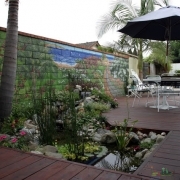


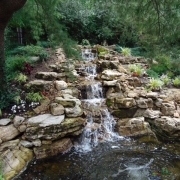 Meyer Aquascape
Meyer Aquascape
